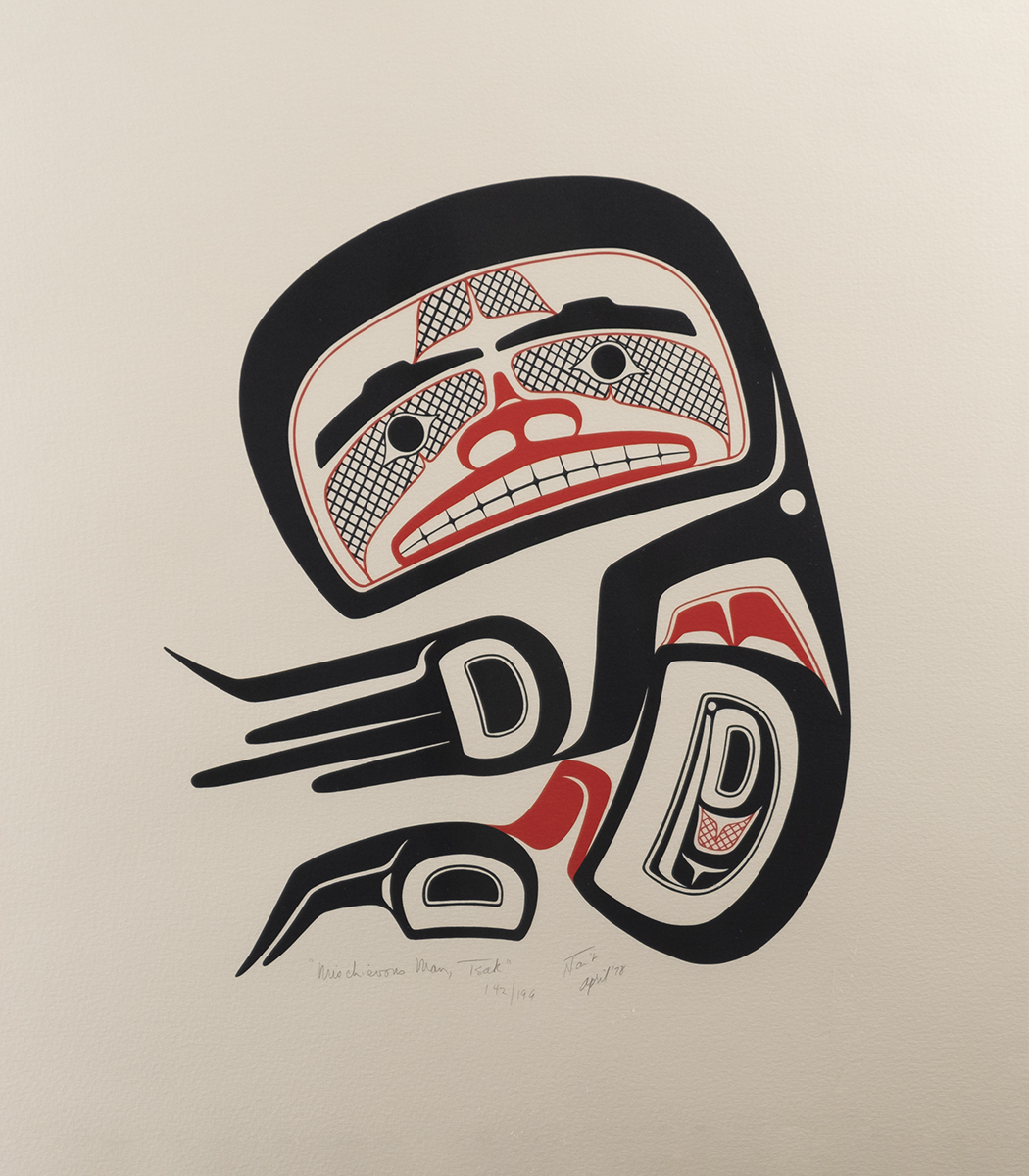Norman Tait grew up in the traditional lands of his native tribe, the Nisga’a, along the Nass River, British Columbia, where they have lived for the last 10,000 years. Tait himself descended from the last formally trained Nisga’a artisan of the old style, and has carried on his family’s historic talent into this century. Through haunting masks, and stunning totem poles, Tait contributed to a renaissance of Nisga’a culture and introduced this art form to the modern world.
Tait began defining Nisga’a art in 1971 after educating himself about the arts heritage of his people by traveling to museums and universities across North America to view the Nisga’a artifacts that had been collected or stolen by early missionaries and anthropologists during the Museum Age. Through these experiences, Tait learned the techniques and skills of jewelry design and sculpture.
Tait’s timing–like that of many great artists–was impeccable. For native people, the early 1970s fomented with a new energy. Through their landmark court challenge, Nisga’a political leaders were demanding self-government and new rights. Tait soon realized that Nisga’a carving, dancing, and other art would have to be resurrected if they were to survive. He began to form strong opinions on how his carvings would interpret traditional Nisga’a themes in new, contemporary ways–driven by the belief that art must grow in order to survive.
Some of his works like monumental sculptures can be seen in England, Japan, Chicago, Phoenix, and Vancouver. Tait used imagery in his masks and poles, which include creatures from the natural world, natural elements and forces, and human beings. Other images are manifestations of the spirit world, representing supernatural beings. He displayed crests on poles, masks and regalia.
Tait’s artwork is simply an excellent example of the beauty, refinement, and elegance of the finest contemporary Northwest Coast Indian Art.

